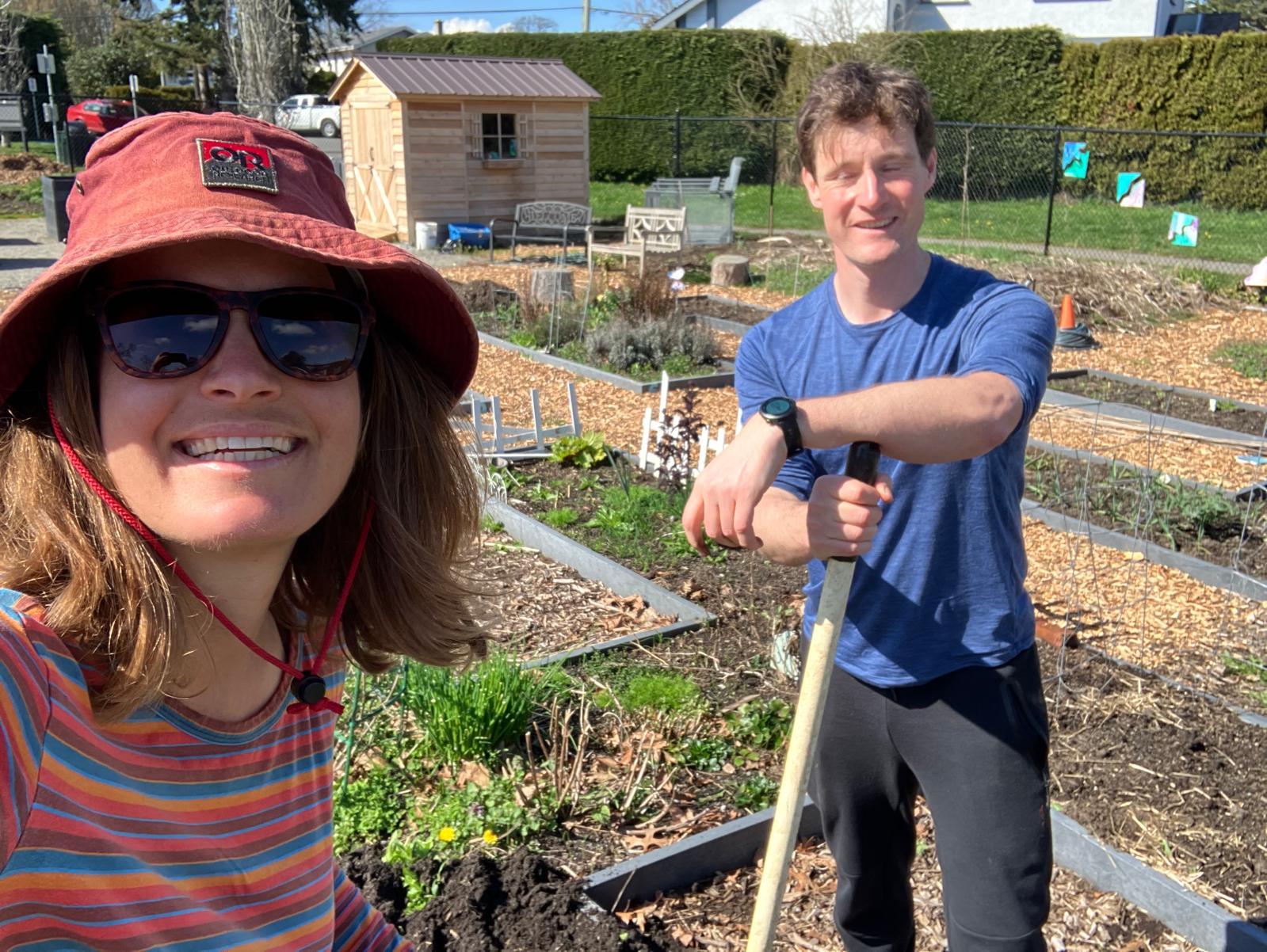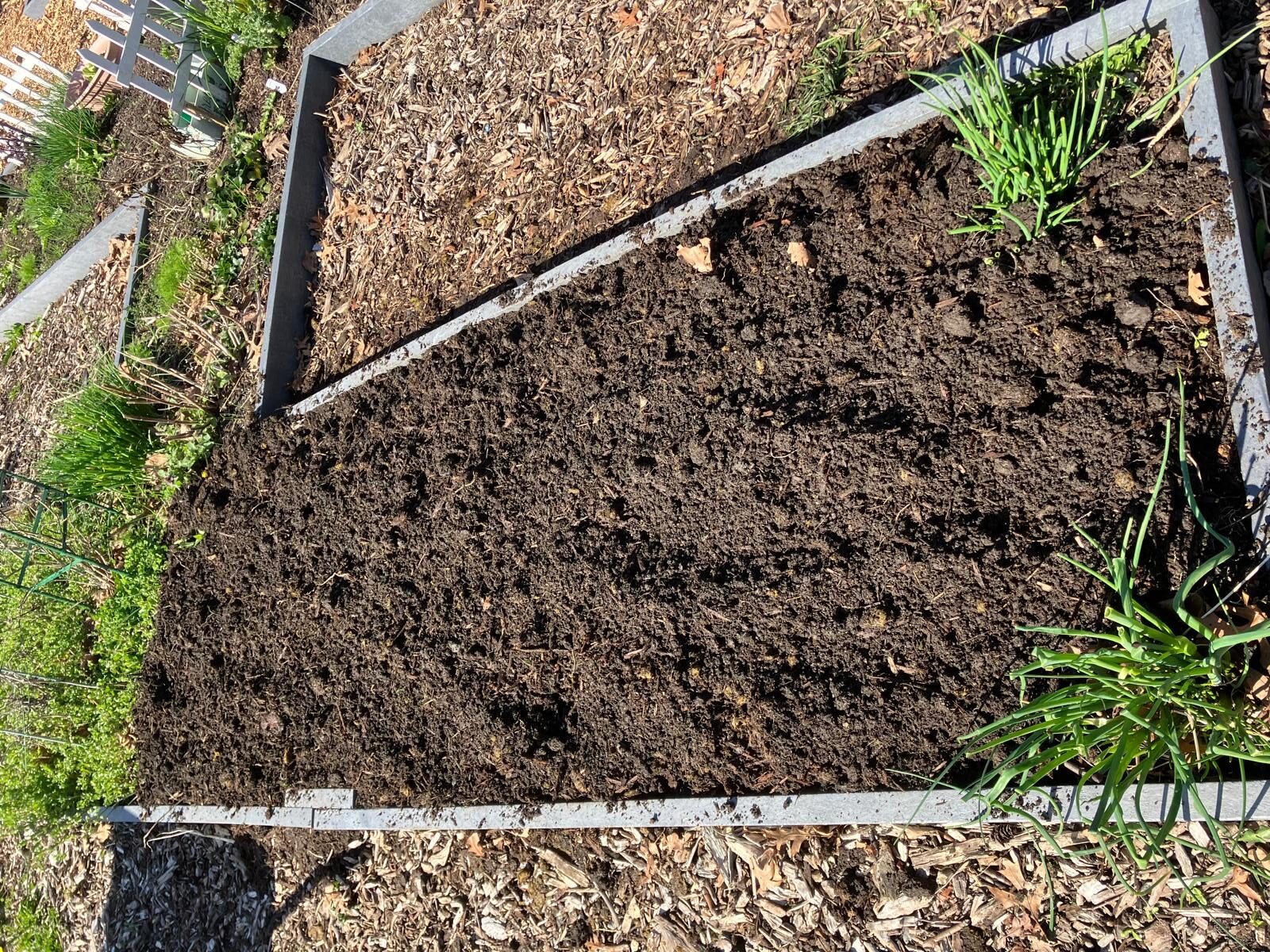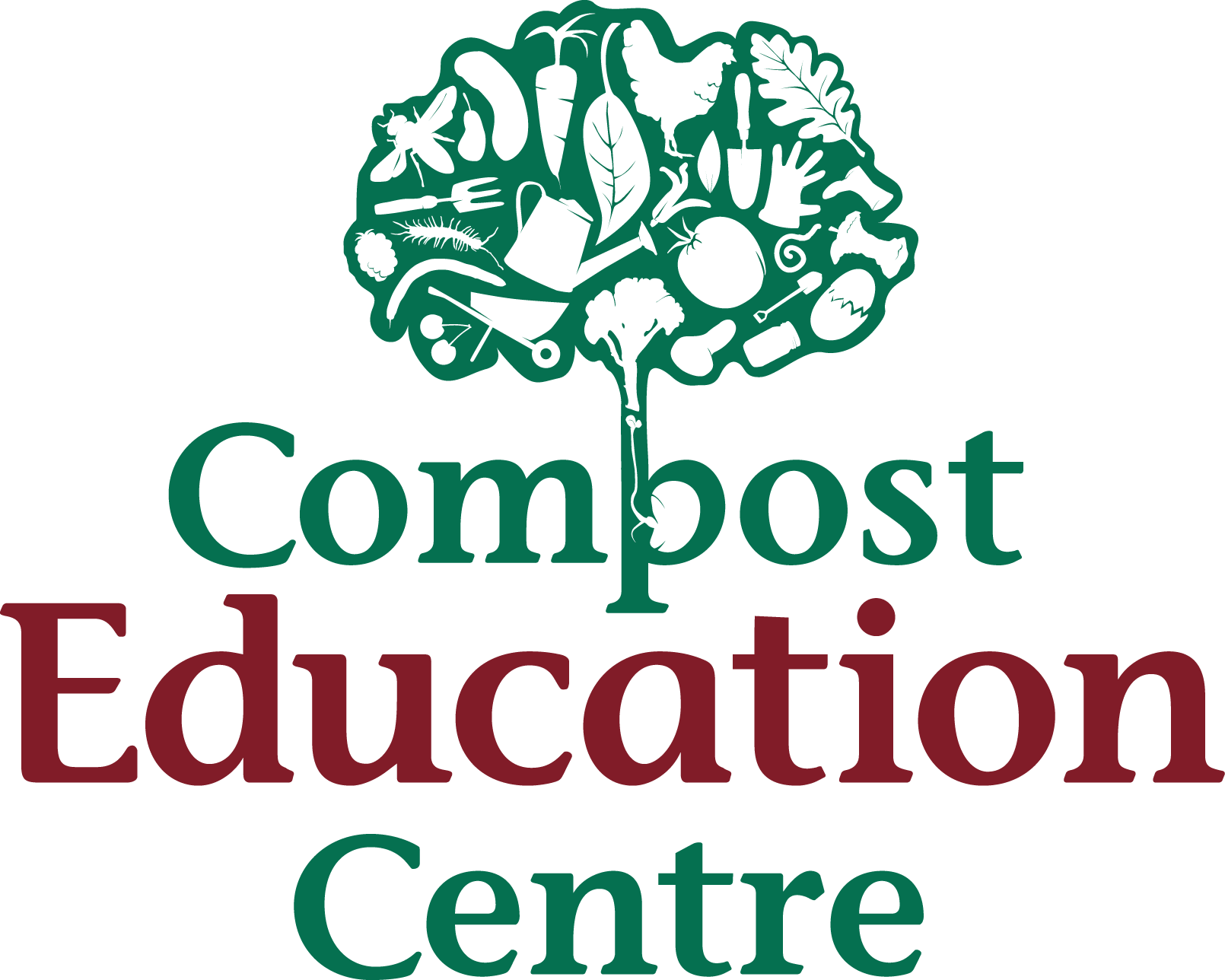Updates from an Amateur Gardener: Thinking About Soil Quality and Compost
April 19, 2024

I haven’t officially taken possession of my plot, but I’ve wandered over to take a look a few times. The soil doesn’t look as happy and healthy as the soil at the CEC demonstration site (although the CEC’s soil is about 32 years in the making), and it doesn’t smell as “earthy” or “mushroom-like” as Kayla recommends for a vegetable garden. It feels and looks a bit sandy, which has me thinking I should try to add some compost and/or organic matter.

A few months ago, someone dropped off a Bokashi at the CEC because they weren’t interested in using it anymore. The Bokashi system is a 5-gallon bucket that facilitates anaerobic fermentation of organic matter that produces a nutrient-rich liquid that you can use as plant fertilizer as well as a fermented residual that needs to be further composted. At the time, Zoe-Blue encouraged me to take the Bokashi home for some experiments. I hesitated for a few reasons. The first is that while I have many houseplants, I don’t have so many that I need a constant supply of liquid fertilizer. The second is that I wasn’t quite sure what to do with the residual besides put it in our apartment’s organics green bin. The third is that the Bokashi system uses a “bran,” or a mix of essential microbes on a cereal base. While you can buy bokashi bran online from Bokashi Living, I felt daunted by the shipping costs. So I had left the Bokashi sitting (lonely) on our balcony for the past few months.
With the availability of a garden plot, I’ve felt re-energized to use the Bokashi. I stumbled upon this recipe for Bokashi bran using used coffee grounds. I had everything I needed on the recipe list to make the Bokashi bran except the “Effective Microorganisms,” (EM) and I was able to order those locally from the Organic Gardener’s Pantry. The Pantry’s owner, Christina, dropped the EM off for me at the CEC office this week. I’m excited to keep drinking coffee and get this Bokashi going. (I also realized when ordering the EM that Christina also sells Bokashi bran…so I’ve got a backup plan if this DIY approach doesn’t work out.)

In the meantime, my friend Amanda let me know where I could get some partially decomposed horse manure. Animal manure from cows, sheep, and horses can be an awesome soil amendment for home gardens. The manure supplies primary nutrients and micronutrients for plant growth, and it’s also a source of organic matter. By increasing the organic matter of the soil, you can increase the soil’s water-holding capacity, improve soil drainage, and promote the growth of beneficial soil microorganisms.
I have a few months until I plant and harvest so I applied about a wheelbarrow’s worth of manure, and I worked it in the soil. My plan is to keep any eye on it over the next few months, keep working it into the soil, and hope that it is more fully decomposed before planting.

After I mixed the manure in with the soil (which was so much fun!), I did get the warning from another friend that horse manure can contain a high amount of grass and weed seeds. This is something I’ll keep an eye on over the next few weeks, and I might do something differently next year!
Posted in Uncategorized